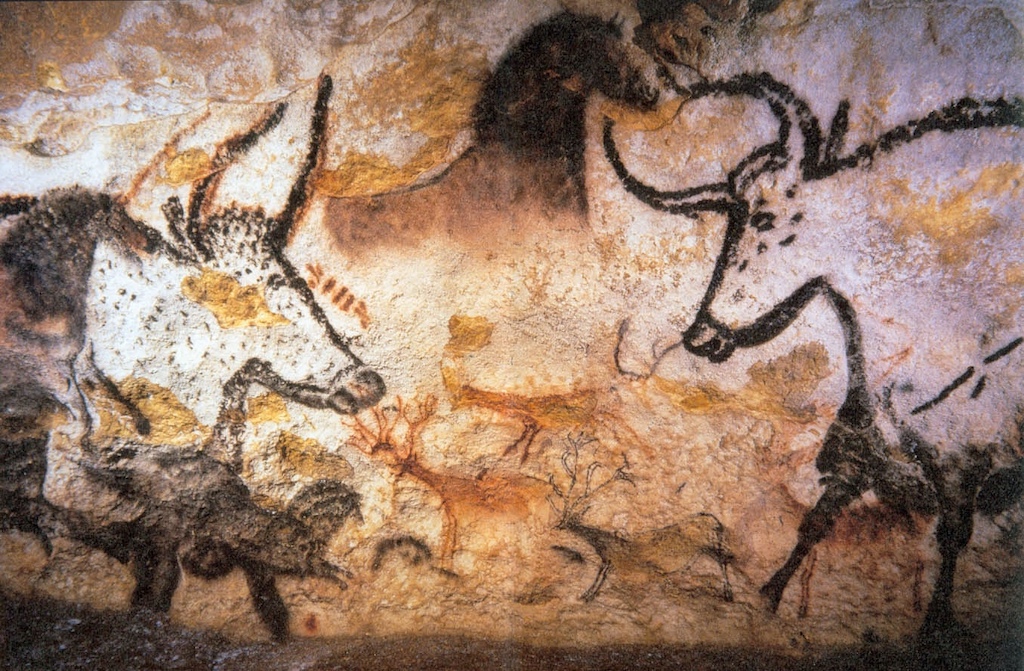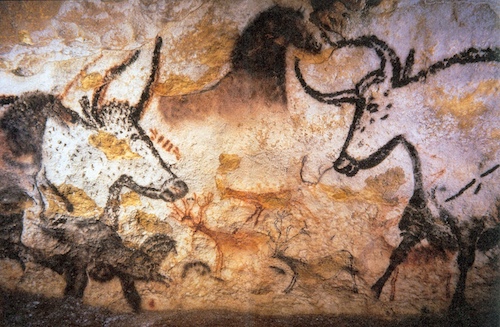As I mentioned in the website, modern cattle are descended from ancient aurochs as pictured above in Lascaux. In Europe the aurochs were hunted to extinction although a small herd survived in Poland until 1627. What we did not know is the relatively small number of animals from which modern cattle descended. A genetic study has determined that all domesticated bovines are descended from a single herd of wild aurochs, which lived 10,500 years ago.
Dr Ruth Bollongino of CNRS, France, and the University of Mainz, Germany; lead author of the study, said: “Getting reliable DNA sequences from remains found in cold environments is routine but it is much more difficult in hot climates such as Iran where the study was performed. The study is published in the March 2012 issue of the journal Molecular Biology and Evolution. They excavated the bones of domestic cattle on archaeological sites in Iran, and then compared those to modern cows. They looked at how differences in DNA sequences could have arisen under different population history scenarios, modelled in computer simulations.
This is consistent with the limited range of cattle 10,500 years ago and is pretty easy to explain. While sheep and goats can travel with a nomadic tribe, aurochs were big, mean animals and catching them would have been no small feat. Once caught, the arouchs would have been selectively bred to smaller, more docile cattle. All of this would require a Neolithic fixed settlement at a very early time period when the number of such settlements might be counted on your fingers. Once the process was started however, the cow population grew exponentially to the approximately 1.4 billion cows in the world today.
Speaking of aurochs, an attempt is being made to recreate the species by means of DNA recovered from fossils as reported by Time. Stichting Taurus, the Dutch preservationist group leading the project, is hoping a reborn aurochs could help restore the European countryside to a more natural state. To that end, the group would eventually like to replace the domesticated cattle that currently graze in Holland’s nature reserves with the recreated wild aurochs. Unlike the Heck cattle, bred by the Heck brothers in Nazi Germany to resemble arouchs, these would be genetically real aurochs. Heck cattle, for example, are more aggressive than aurochs because they were bred, in part, using Spanish fighting bulls. This looks to be a pretty long term project but I will be looking for the results.


